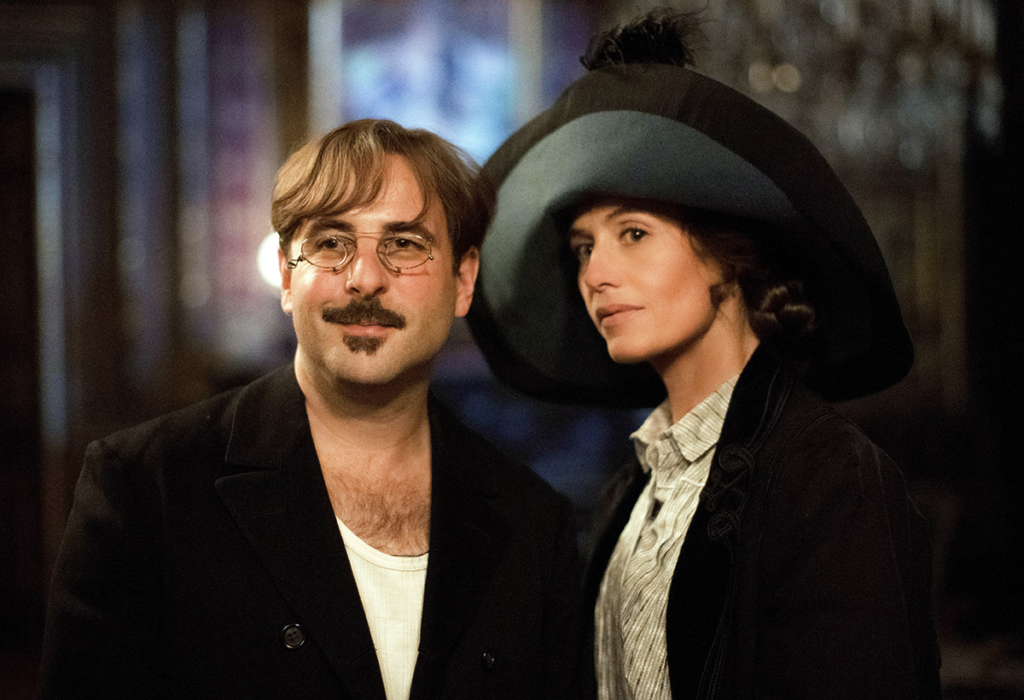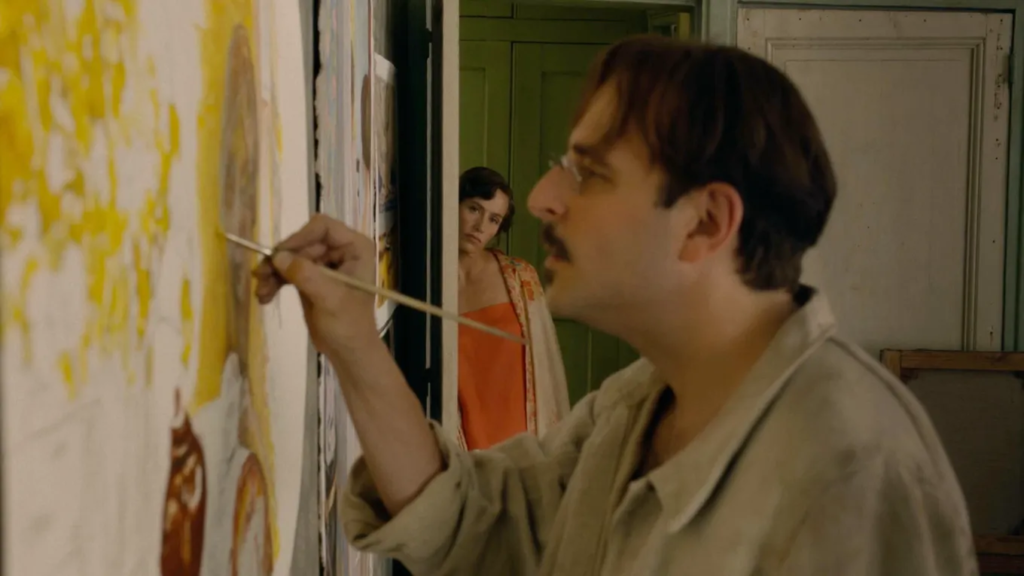Director: Martin Provost
Writers: Marc Abdelnour, Martin Provost
Stars: Cécile de France, Vincent Macaigne, Stacy Martin
Synopsis: Explores the art and love story of renowned French painters Pierre Bonnard and his wife Marthe.
Critics tend to approach biopics with relatively low expectations. When you’ve been burned so many times before, you set yourself up to politely nod along with the relatively pedestrian entries in this genre that pass through the assembly line every year. Filmmakers seem to approach the task of dramatizing the lives of great people with a reverent touch that sucks all of the tension, suspense and meaning out of scenarios that could be vivified in a different context. In this spirit, I walked into my local screening of Bonnard, Pierre et Marthe (2023) in a nonchalant mood. It couldn’t possibly reach the heights of In the City of Sylvia (2007) but it should, at least, keep me reasonably entertained for two hours.

If nothing else, the film features a bevy of attractive French film stars who, in the manner of Old Hollywood actors, are willing to bring their own signature persona to every role. There is a certain novelty in seeing Vincent Macaigne portray Pierre Bonnard, a noted Post-Impressionist painter who was particularly active during the 1890s, as just another in a long line of winsome, gentle-spirited nebbishes that he has portrayed. He doesn’t make a real attempt to alter his distinctive quirks to suit the social mores of the period in which the film is set and, in a sense, this gives him more breathing room as a performer. Rather than taking the viewer out of the film, Macaigne’s warm, relaxed performance does far more to open up the film than any technique-heavy imitation could.
His performance stands at the center of a biopic that briefly shows signs of wanting to be more than just a parade of famous faces before retreating back into convention. The film’s focus, as the title would suggest, is split between Pierre and his longtime muse Marthe de Méligny (Cécile de France). He is presented as a minor aristocrat turned high society artist who finds an outlet for his creative energies in the form of her intense, slightly belligerent manner. Before long, she has become the primary subject of much of his artistic output and the two shack up together in spite of the fact that they are unmarried. They purchase a house in the countryside and, for a time, live in a sort of earthly paradise. Cracks in their marriage start to appear when Marthe comes into conflict with the members of Pierre’s Paris-based social set, as she hopes to remain secluded in the countryside for months on end while he maintains a completely separate life in the big city.
A lot of this content is the sort of dispassionate, colorless stuff that you could find in a textbook and it doesn’t translate all that well to the screen. Things start to get a bit more dynamic whenever Misia (Anouk Grinberg), a flamboyant socialite who may or not be Pierre’s erstwhile lover, appears on screen. When the story’s main players are swanning around in Paris or arguing while trudging through swamps in the middle of nowhere, you can convince yourself that this is a mood piece that aims to capture the ambience of a specific time and place. When we return to the farmhouse and, more specifically, to scenes in which Marthe’s actions are shown to directly inspire some of Pierre’s most famous paintings, you’re reminded of what you’re really working with here.
In the tradition of many-a-biopic, it ultimately concerns itself with the scandalous sex lives of its subjects. While the film downplays Bonnard’s real-life womanizing to a considerable degree, it only really begins to hit its stride when Renée Monchaty (Stacy Martin) arrives on the scene. This being a French film, it is only a matter of time until this young, unworldly student is taken in hand by the bohemian freethinkers at the story’s center. Before long, she’s whisked away to the couple’s country estate; where she becomes the vessel through which they can re-energize their floundering sex life. In a surprising plot development, she quickly announces that she’s unhappy being the third wheel in this wildly imbalanced ménage à trois and urges Pierre to abandon his wife and enter into a committed relationship with her.

It is this turn that allows the film to come into its own, developing into more than just a portrait of generic amour fou. For a good thirty minutes, it appears as though the film is addressing the vicious, cutthroat treatment of women within the art world in a startlingly direct, unsentimental manner. As soon as Pierre makes the unexpected decision to give up his life with Marthe in order to run away to Italy with Renée, the whole film downshifts into a radically different emotional tenor. For the first time, we are placed at an emotional remove from these characters and their inner thoughts are rendered opaque. Provost lingers on drawn-out sequences of Pierre’s placid, unnervingly serene existence in what looks to be a hermetically sealed apartment. The distancing effects are heightened by Macaigne’s performance, which is dialed back to a point where Pierre almost seems to be disappearing into himself. When this section of the film ends on an expertly staged, quietly horrifying note, I was prepared to embrace it as a darker retelling of a story that we have heard many times before.
One gets the sense that he is aiming to evoke the spirit of Agnés Varda’s Le Bonheur (1965), in which an ordinary family man calmly trades in his wife for another woman. That film represented a more radical stylistic experiment than anything that Provost achieves here. However, it’s still intriguing to see Provost attempting to integrate such an abrasive, off-putting sensibility into a genre that isn’t known for challenging its audience. He seems to undercut his point when he implies, later on in the film, that Pierre is willing, on some level, to wrestle with the weight of his actions. He still leaves some room for ambiguity, with regards to Marthe’s seeming impassivity in the face of the news of Renée’s death, but in order for the film’s coda to really hit hard, the film would have had to sustain the atmosphere of unease that it creates during its second act. It is, of course, difficult to end a film on such a sour note but that’s what delineates an artist like Varda from her many imitators.





